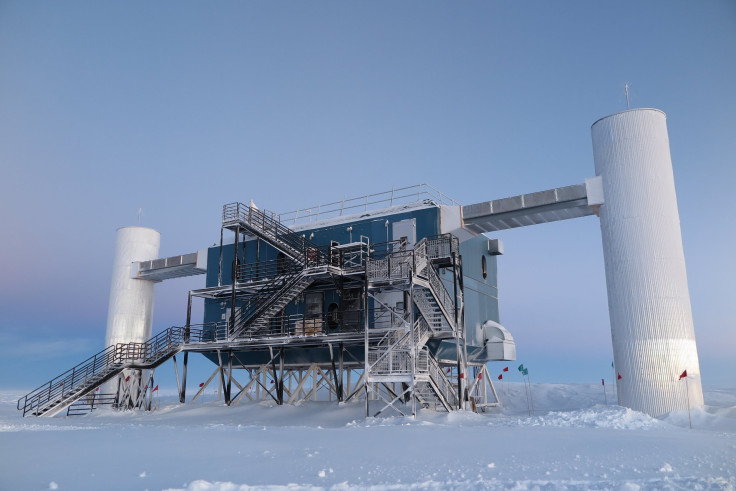IceCube Observatory To Investigate Fast Radio Bursts From Space, Possible Neutrino Link

In the 10 years that have passed since they were first detected, fast radio bursts (FRBs) have not lost any of their mystery. Despite being detected dozens of more times since, these powerful radio bursts from space still confound astrophysicists.
The latest attempt to investigate and explain them involves using the IceCube observatory in Antarctica — the world’s most sensitive neutrino detector currently. Comprised of 5,160 optical modules that are embedded in clear ice a mile below the South Pole, the telescope at the neutrino observatory has an extremely wide field of view, seeing the entire sky in both the northern and southern hemispheres, giving it an advantage over other optical and radio telescopes.
Justin Vandenbroucke, a physicist from University of Wisconsin-Madison (the institution that supervises IceCube), explained in a statement Monday the idea behind using IceCube was “to see if high-energy neutrinos are generated coincident with FRBs. If that’s the case, it would give scientists leads to what might be generating the powerful radio flares and reveal something about the physics of the environments where they are generated.”
Compared to neutrinos — billions of which are streaming through your body even as you are reading this sentence — FRB detections are few and far between, very random and last only a fraction of a second. That makes them especially difficult to study, since both routine detection and follow-up observations are difficult to make. Given its reach, IceCube is useful in this regard because Vandenbroucke’s team can analyze the data for the exact part of the sky where a radio telescope anywhere in the world detects an FRB.
Other than explaining the mechanism that leads to FRBs, another potentially exciting discovery would be a link between FRBs and neutrinos.
“Astrophysical neutrinos and fast radio bursts are two of the most exciting mysteries in physics today. There may be a link between them,” Vandenbroucke said in the statement.
Scientists do not yet know the source behind the bright, very-high energy class of neutrinos.
“We’ve ruled out gamma-ray bursts and we’ve strongly constrained the possibility of black holes. There could be even more exotic physics going on,” Vandenbroucke said.
With an eye on a possible FRB-neutrino link, his team has looked at IceCube data for about 30 FRBs so far, of which 17 bursts are the only known repeating bursts — an object called FRB 121102 that is located in a galaxy about 3 billion light-years away. None of the FRBs showed any neutrino emissions, and that allows scientists to put an upper limit constraint on the number of neutrinos that could be emitted in an FRB.
“We can say that the amount of energy emitted by each burst as neutrinos is less than a certain amount, which can then be compared to predictions from individual theories. As the number of bursts is expected to grow dramatically in the next couple years, these constraints will become even stronger — or we will make a detection,” Vandenbroucke explained.
Just because very few FRBs have been detected on Earth does not mean they are actually rare in space. They perhaps occur every second somewhere in the observable universe.
© Copyright IBTimes 2024. All rights reserved.





















